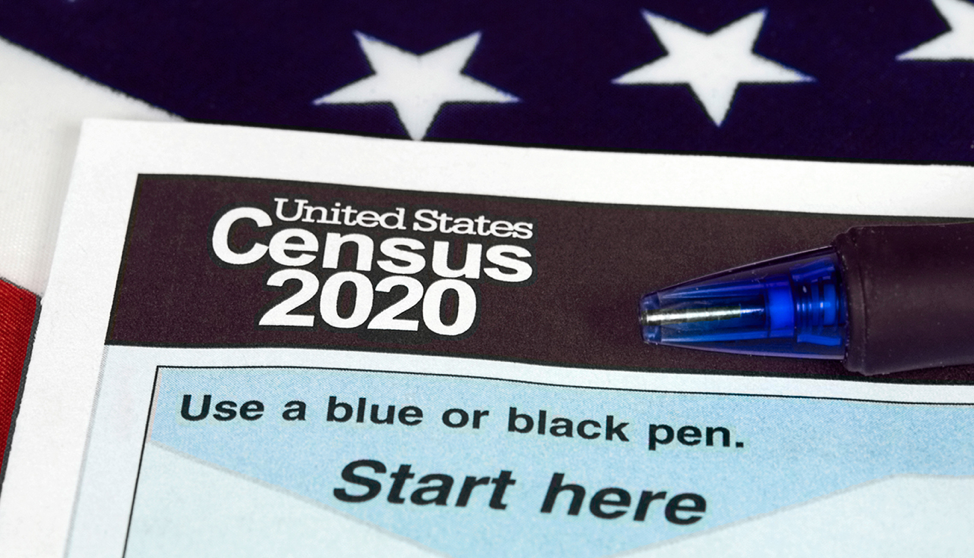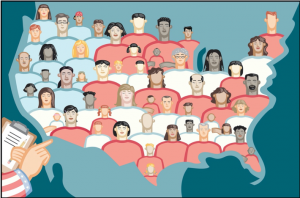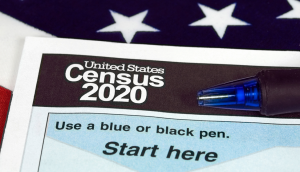Mitigating the Risk for Falling through the Cracks: Strengthening the Census Response Rate
In capturing data on everyone once every decade, the Census is a handy tool on which many of us base our research, programming, and communication. The Census has been around for 117 years, and every decade we see the stark differences in our composition from the decade before. Across many dimensions, the Census measures the pace of change for the country as a whole, each state as a whole, and any local community. In order for us to react to our changing surroundings, we must first know in what ways it is changing—this is the value of the Census.

The Census.
In capturing data on everyone once every decade, the Census is a handy tool on which many of us base our research, programming, and communication. The Census has been around for 117 years, and every decade we see the stark differences in our composition from the decade before. Across many dimensions, the Census measures the pace of change for the country as a whole, each state as a whole, and any local community. In order for us to react to our changing surroundings, we must first know in what ways it is changing—this is the value of the Census.

Aside from the value of the Census for our research, programming and communications, it is also a powerful tool for determining where many federal, state, and local resources are allocated. As the most reliable composition of the population, Census data provides the foundation for distributing more than $675 billion in federal funds each year to communities across the United States to support important programs—including housing, education, transportation, healthcare, and employment. Census data is also used to re-establish the boundaries of congressional and state legislative districts, in addition to other local and state political boundaries, all structural means of increasing representation.

As of today, April 1, here is where we are as a state:
Self Response Rate for North Carolina: 33%
Rank of NC in the U.S.: 39th
As of March 29th, here are some numbers on hard-to-count populations:
| % of Young Children in Census Tracts | Average Self Response Rate |
| Less than 4.1% (542 Tracts) | 29% |
| 4.1% to 5.5% (541 Tracts) | 30.8% |
| 5.5% to 7.2% (541 Tracts) | 31.2% |
| 7.2% and above (541 Tracts) | 29.4% |
Young Children – 5.9% of NC population ages 0-4
| % of Foreign-born Residents in Census Tracts | Average Self Response Rate |
| Less than 2.9% (542 Tracts) | 28% |
| 2.9% to 5.7% (541 Tracts) | 30.4% |
| 5.7% to 9.8% (541 Tracts) | 31.1% |
| 9.8% or higher (541 Tracts) | 30.8% |
Immigrant Population – 7.9% of NC population is foreign-born
| % of Minority Residents in Census Tracts | Average Self Response Rate |
| Less than 14% (542 Tracts) | 30.2% |
| 14% to 28% (541 Tracts) | 32.6% |
| 28% to 50% (541 Tracts) | 30.7% |
| 50% or higher (541 Tracts) | 26.9% |
Minority Population – 34% of NC population is American Indian, Asian/Pacific Islander, Black, or Hispanic/Latinx
| % of Residents in Census Tracts with No Internet | Average Self Response Rate |
| Less than 12% (541 Tracts) | 35% |
| 12% to 21% (541 Tracts) | 30.4% |
| 21% to 31% (541 Tracts) | 28.2% |
| 31% or higher (541 Tracts) | 26.9% |
No Internet – 21% of NC households do not have Internet at home
For more data like this, please check out NC Demography’s Census Tracker: https://www.ncdemography.org/2020-census-tracker/
As an organization that works in public policy alongside communities and community partners, the ncIMPACT Initiative uses Census data all the time. A question we’ve been asking ourselves is: how can we all do our part to make sure this year’s North Carolina count is as accurate and complete as possible?
Here are some ways that might help you amplify the importance of the Census within your reach:
- Use your social capital. One example of using your social capital, or your networks and connections, is by tweeting, sharing, or blogging about the Census on your social media platforms. Share the related content of others and make sure to follow any trending topics by using a hashtag on Twitter (#Census2020 is a popular one on Twitter).
- Talk about your own experience filling out the Census. One thing you can do to spread awareness about the Census is to personalize it. Talk about your experience with the Census, whether that is through social media, newsletters, and everyday conversation (most likely through phone calls or Zoom calls, in our current world of social distancing).
- Intentionally reach out to hard-to-count-communities. Leverage your relationships with organizations and communities that work directly with hard to count communities. For those who run these organizations, be intentional about encouraging the Census completion to your program participants and communities. Hard to reach communities include:
-
- Young children under age 5
- Hispanic or Latino individuals
- American Indian/Alaska Native individuals
- Black or African American individuals
- Frequent movers
- Renters
- Know the numbers. While it’s important to tell personal stories and make an individual case for filling out the Census, it is also incredibly important to emphasize what is at stake, including the number of dollars. More than $1.5 trillion in federal funding to state and local governments is distributed based on Census data – that’s a lot of dollars, and the number may help you make a compelling case for completing the Census.

We challenge you to spread the word about the Census and its great importance today. The link to respond to the Census can be found here: https://my2020census.gov/
